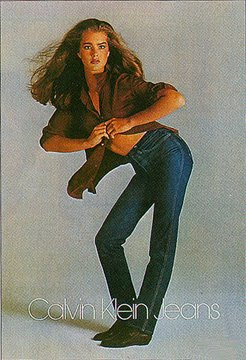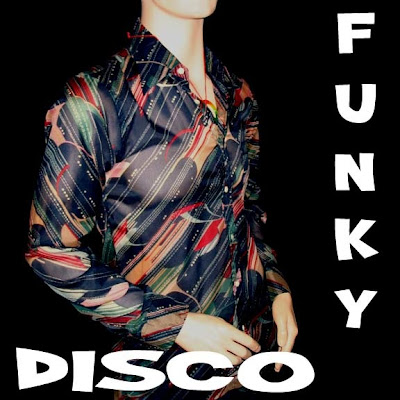Real Transmedia, The Hills, Lauren Conrad Edition

In a culture like ours, long accustomed to splitting and dividing all things as a means of control, it is sometimes a bit of a shock to be reminded that, in operational and practical fact, the medium is the message. This is merely to say that the personal and social consequences of any medium- that is, of any extensions of ourselves - result from the new scale that is introduced into our affairs by each extension of ourselves, or by a new technology. . . The electric light escapes attention as a communication medium just because it has no “content.” And this makes it an invaluable instance of how people fail to study media at all. For it is not till the electric light is used to spell out some brand name that it is noticed as a medium. Then it is not the light, but the “content” . . . that is noticed.
Marshall McLuhan
I know who Lauren Conrad is. She was right on the cover of Us Magazine in the airport, and I recognized the name. There is no reason for me to know of her. I have never seen an episode of The Hills or her original show, Laguna Beach. She doesn't have a sex tape like Paris Hilton. This knowledge is probably using brain cells which would be much better served holding something else. I know her because Lauren Conrad is a Transmedia property.
Transmedia auteur Jesse Alexander, writes "Transmedia Storytelling extends narrative across multiple platforms: TV, Movies, Cell Phones, Websites, Toys, Video Games, Etc. Reaching new consumers, and immersing existing fans in the world of their favorite franchise. To my knowledge the term was coined by MIT Professor Henry Jenkins." We usually cite examples like Star Wars, Heroes, The Matrix as Transmedia properties. Or course they do transcend their launch medium, but relative to Lauren Conrad, they are synthetic. Lauren Conrad is organic. The representation we see on TV is the representation in the tabloids, is the representation in her fashion line, is the representation we see on entertainment news programs, is the representation in the music videos, is the representation we see in the Laguna Beach video game. Emmy award winning ARG designer,Matt Wolf, got me thinking about this when he pointed out Hannah Montana as another example of Transmedia execution, but even Hannah Montana is a separate entity from her alter ego, Miley Cyrus.
There is a lot of buzz among the studios and game companies about "transmedia" properties or "360" properties. Media agnostic properties with a presence in all media. Not Walt Disney's merchandising from the thirties, but true presence, advancing the story and impacting the viewer in every media. Star Wars was traditionally held up as the paradigm, but its growth was more haphazard than by design. Creators, and their backers don't want to take the risk, or the time, so they are starting to conceive of properties from the design phase with multiple outlets in mind. Each implementation tells a different side of the story using the unique attributes of the extant medium. When done right, it is amazingly lucrative and satisfying to the audience. When done wrong, it turns into a frankenproperty devoid of soul.
The foundation of a Transmedia property is a strong and believable story bible. There must be a universe with a well defined backstory so new story elements and implementations are consistent and justified. This is easily covered by Lauren Conrad, she plays herself in the show. Not like Mary Tyler Moore or Bob Newhart did. Rumor has it, "herself" is assisted by better writers and placed in more interesting situations than we mere mortals, but it is ostensibly, herself. If the rumors are true, you certainly can't blame her. I can think of about 2.5 million situations in my life which would have been improved by better writers. As herself, Lauren Conrad moves seamlessly from the show into the real world while traditional properties must be pushed artificially beyond their primary media through licensing and marketing, or a combination of both. Like these properties, Lauren Conrad has a licensing program - she has clothes - but unlike them, her story moves seamlessly from the television screen to the mainstream media. Perezhilton, Entertainment Tonight, Us Magazine, E Channel, People, The Wall Street Journal, and of course MTV all cover her life, which is the very story line of the show. Us Magazine's cover reported some guy stabbed her in the back. Other outlets, like the San Francisco Chronicle immediately reacted with stories from Lauren Conrad about how the magazine misrepresented her position - isn't there a war to write about? This is story telling.
The Wall Street Journal article provided an illustrative anecdote about the star:
To keep themselves in the spotlight, Ms. Conrad and her contemporaries are willing citizens of a tabloid world. During a recent breakfast interview at an outdoor café in Los Angeles, Ms. Conrad said she suspected a photographer was taking pictures of her from across the street. She declined to move to an inside table. Instead, she looked left and right before taking quick bites of her egg whites. "No one eats pretty," she said.
Less than three hours later, Ms. Conrad sent her breakfast companion an email with a photo attached of her enjoying her eggs. She had found the photo after a Google search. "Haha they always get it!" she wrote.
Ms. Conrad's team monitors the star's symbiotic relationship with the press. It's essential that she hit the hot spots, where tabloid photographers lurk. Yet because Ms. Conrad's corporate relationships benefit from her good-girl image, they want her to go to a lot of parties without partying a lot.
She uses the mainstream media like the rest of use Facebook. When was the last time you saw Mickey on the cover of People. Or Angelina Jolie interviewed as the character she plays in a film? In this case, we have a single narrative extended across multiple media. In his book, Convergence Culture, Henry Jenkins downplayed Mcluhan's position regarding the medium being the message. Technology is not active in the message, it is merely delivering it to the consumer. This is true if you are consuming fantasy. Water, and consumers flow to the path of least resistance. But when the nightly news disseminates your story, which is an extension of your life, the medium becomes the message. More weight is given to a story from an ostensibly credible news source - I am talking about the Wall Street Journal here - than to a character portrayed in a film, or even an entertainment interview about an actor. Her presence hits our culture in a different place than Star Wars or The Matrix. Even the most hardcore fan will acknowledge The Matrix is fiction. However, like a sadly delusional wrestling fan who swears the WWE is a sport, the young teens being weaned from their parents by The Hills, and Lauren Conrad's latest fashion show, just don't know.
If you look closely, you can see MTV's hand, but in this case, the illusion is better than anything Criss Angel will have in his new show at the Luxor and nothing Vince McMahon could ever dream of. In the name of entertainment MTV has unleashed a new, powerful form of entertainment. Let's cross our fingers and hope they use their power for good.



Comments